New regulatory frameworks are aiding CCUS economics, and the number of new projects has increased rapidly in recent years. The capture capacity of projects under development and the number of facilities has doubled in the last 12 months. However, due to a variety of technical and economic challenges faced throughout the CCUS project life cycle (see below), many projects under development are failing to materialize.
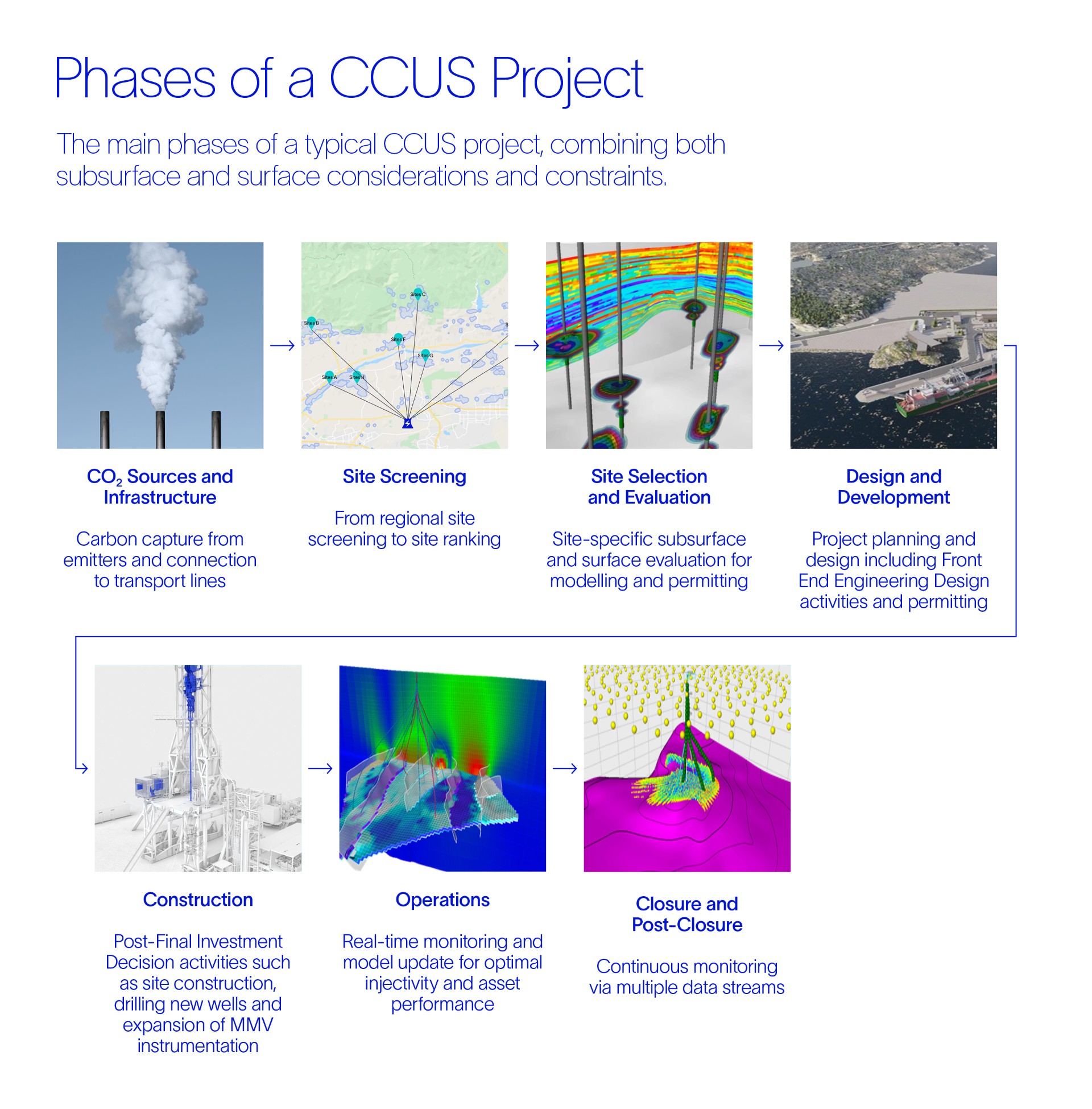
Innovative digital tech can provide a paradigm shift to overcome each of these challenges. Advanced simulation tools enable faster and more accurate optimization of capital-intensive investments in the planning phase, while AI and automation can improve project performance and conformance, as well as drive down operational costs.
Digital tech plays a big role across the life of a CCUS project
In the early phases of a CCUS project, it’s important to screen large areas for the best sites by considering all technical performance factors, including capacity, injectivity, and containment.
In addition to the technical factors, there are equally critical nontechnical requirements such as the presence of legacy wells in the area, monitorability, legal requirements, public opinion, proximity to transport networks and sensitive areas, and most importantly, the techno-economic evaluation of the project. Such detailed analysis typically takes many years, is often based on a limited amount of data, and involves many decision makers and stakeholders. Quite often, ad hoc decision making takes place, making the decision process framework nonrepeatable and inconsistent.
Start your CO2 storage site screening and ranking on the best footing
Digital tech can help accelerate the permitting process by ensuring that a comprehensive and consistent screening methodology is applied systematically to multiple assets across the globe. First, the stakeholders need to agree upon the criteria that will be used to rank the sites and ultimately select the best ones. A collaborative digital space in which all data is shared with all stakeholders makes this process reliable, unbiased, data-centric, and traceable.
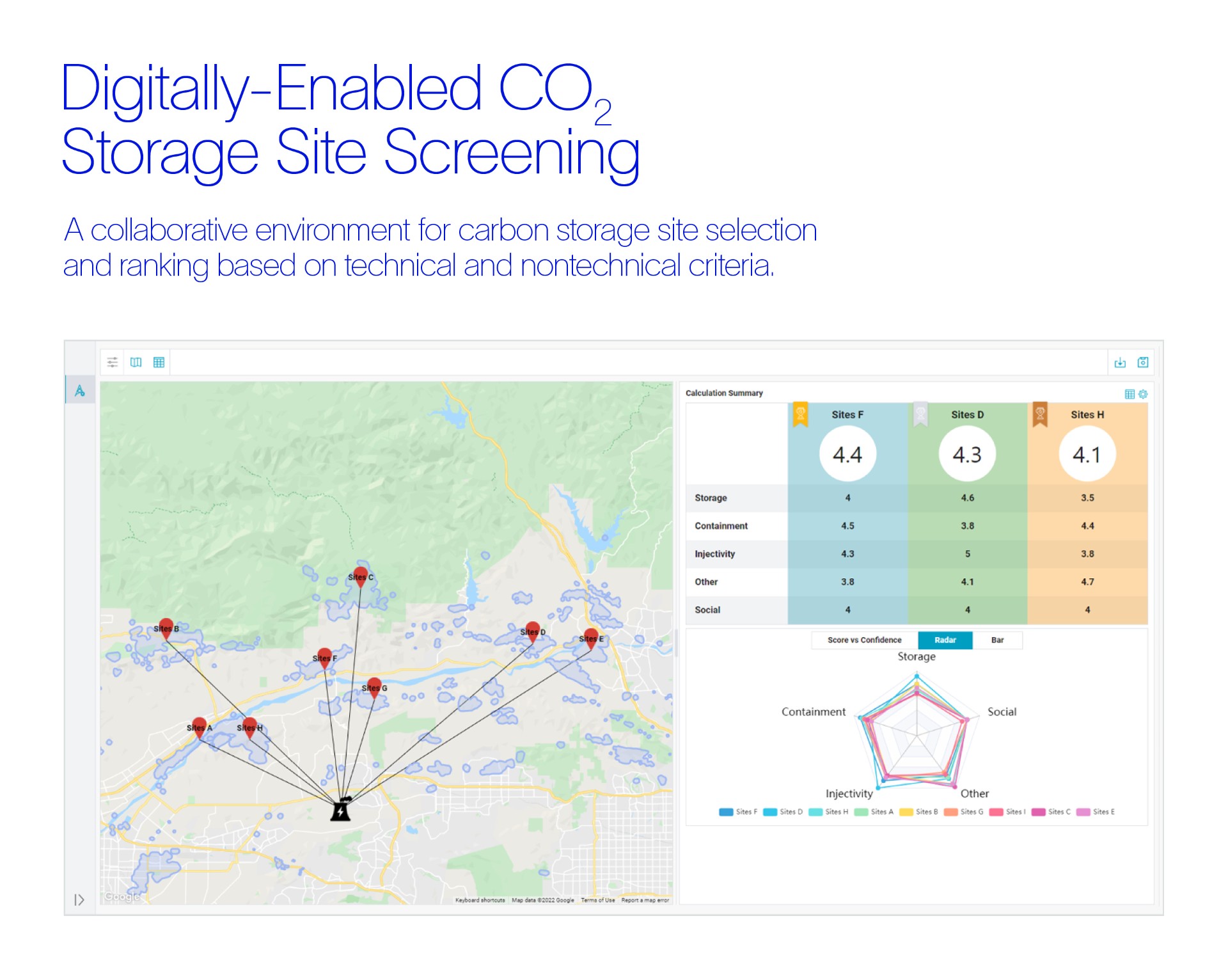
The various criteria are not always quantitative, and they may conflict with each other as they try to address different risks. Their relative importance generally depends on the context. To manage variability, a company can use an analytic hierarchy process (AHP) to determine the relative weights of different decision criteria. AHP can evaluate attributes both quantitatively and qualitatively, thereby enabling the simple and effective determination of relative weights by comparing attributes in pairs.
Next, the intuitive Technique for Order of Preference by Similarity to Ideal Solution (TOPSIS) is applied to calculate site scores and rank sites by comparing each weighted criterion simultaneously for all sites. Monte Carlo simulation is used for uncertainty analysis considering the uncertainty of site properties, and a sensitivity analysis is provided to show how the ranking results change when inputs vary.
This digital framework enables vast amounts of data to be harnessed from public sources and proprietary data alike. The scalability of the digital approach makes the site ranking and selection process more accurate and efficient, allowing us to consider and simulate the likelihood of numerous scenarios, explore uncertainty in greater detail, and ultimately enable more informed decision making.
Accelerating a CCUS project’s planning phase
Once a storage site has been selected, a detailed evaluation and characterization process begins. CCUS projects tend to have many unknowns, which makes the use of deterministic approaches unsuitable. That said, it’s nearly impossible to consider all parameters using a manual approach due to the large number of variables that can affect a storage site’s quality—variables such as porosity and permeability.
This is why using an automated approach, which generates multiple realizations from structural modeling to reservoir simulation, can dramatically accelerate the characterization phase and enable a better understanding and management of uncertainties. By leveraging AI and cloud scalability, users can gain valuable insights into the project's potential performance and its key risks. This method is called agile reservoir modeling (ARM) and has been used successfully by companies such as Northern Lights to accelerate planning for its first-of-its-kind, open-source CO2 storage hub offshore Norway.
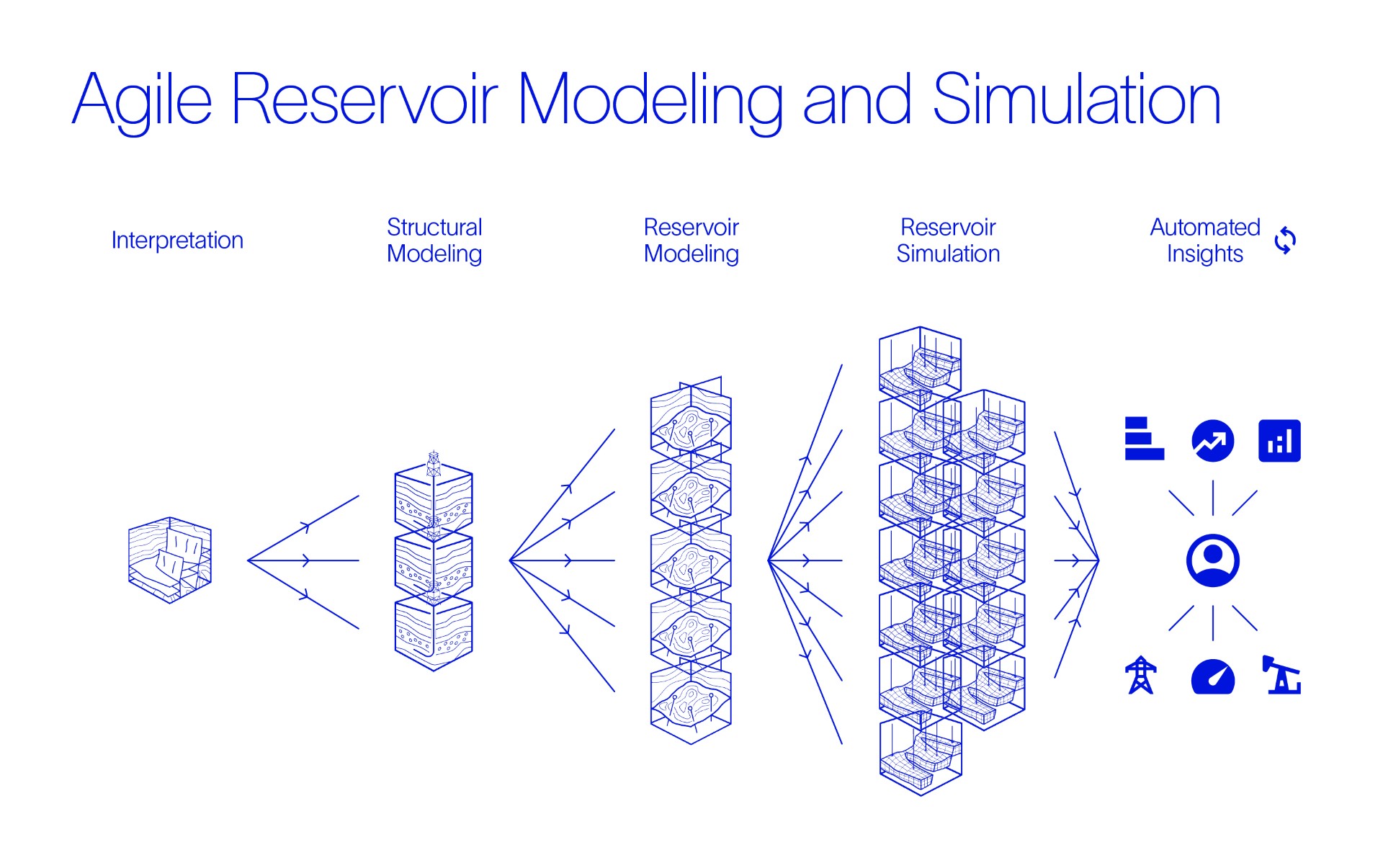
Reducing costs with digital twin technologies
The economics of CCUS projects depend heavily on the cost of carbon capture and transport, which can be up to 80% of the total cost of the project. Failing to optimize these costs can quickly make an otherwise economical CCUS project uneconomical. The digitalization of surface facilities and transport lines has been advancing in the energy sector, opening the door for enhanced workflows that can help control costs, reduce risks, and enhance asset performance and reliability.
Increasingly, advanced digital twins are becoming more and more prevalent and can provide data-centric insights on the behavior of a particular asset (be it equipment, facility, or system). This approach's benefits are generally limited to conventional maintenance applications, such as condition-based modeling (CBM) and prognostic and health management (PHM). By comparison, rigorous physics-based models can provide critical insights to the performance of the assets but are generally inadequate for real-time operations because of their relatively slow performance.
Recent developments in AI combining data- and model-centric approaches provide a powerful and elegant solution to this issue. These “hybrid-AI” models can run an order of magnitude faster than their predecessors, with a flexibility and scalability that enable large-scale optimization in a fraction of a second, along with improving asset health and productivity. Applying this hybrid-AI approach to an amine-based carbon capture plant, for example, made it possible to build a surrogate model that reproduced the same results as a rigorous process-based model (within 1% error) 100 times faster.
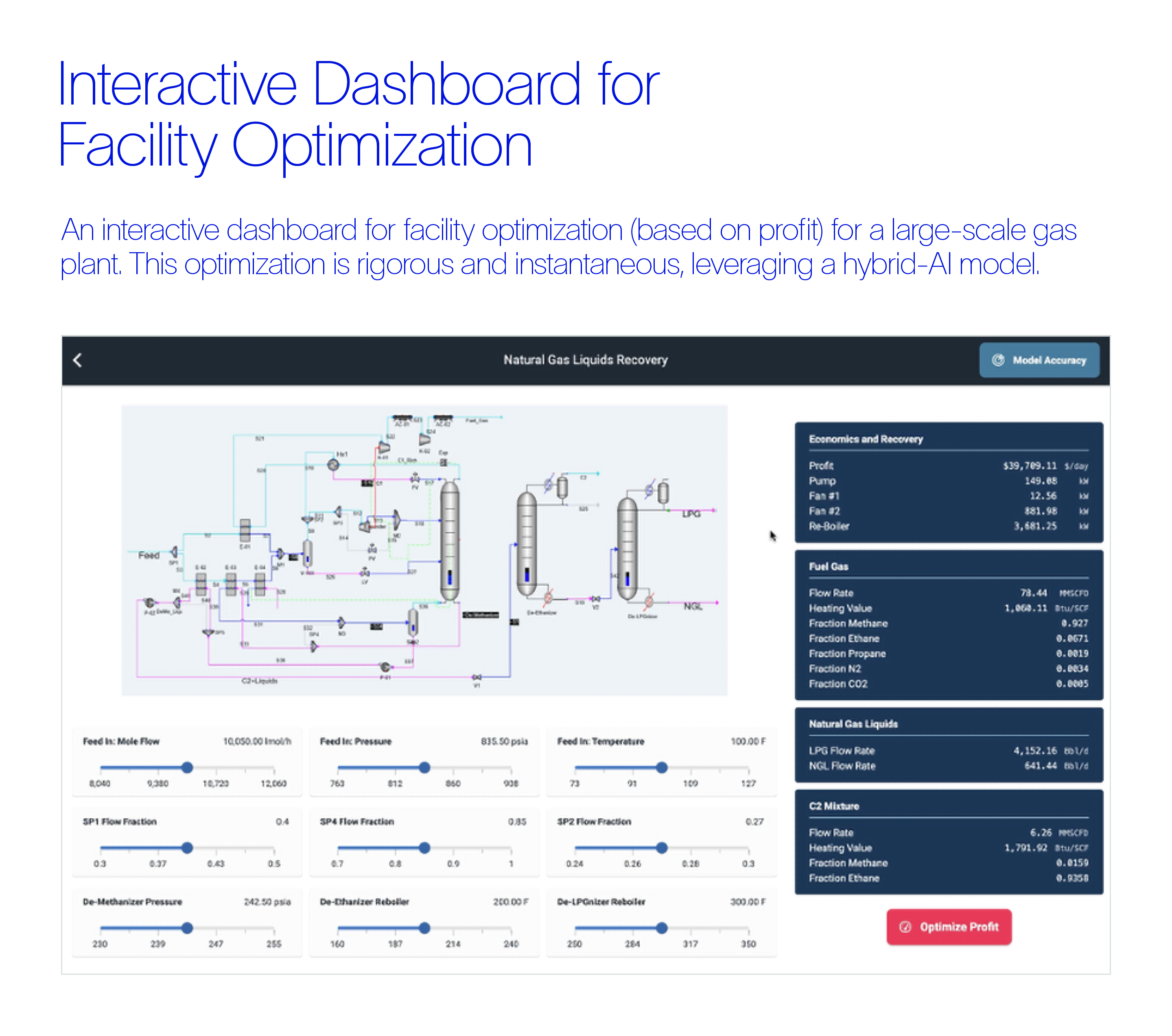
A similar approach was applied to model CO2 transport via pipeline to help prevent common flow assurance issues such as pipeline leak, corrosion, and solid formation. These surrogate models were all built using the ONNX open format and Python recipes, making it possible to combine them in new ways. Such open-source approaches to model building are opening the door to large-scale optimization that immensely benefits CCUS operations.
Breaking silos with digitally enabled workflows and collaboration
Many CCUS operators claim they're suffering from inefficient workflows inherited from oil and gas practices where there is also an abundance of untapped expertise, knowledge, data, and resources that can be applied to CCUS projects. In many ways, CCUS projects are more complex than oil and gas projects due to the large number and variety of stakeholders involved—not to mention the low maturity of standards or best practices.
For CCUS projects to be economical, there’s a need to achieve more with streamlined teams, existing expertise and data, and a holistic approach from project inception all the way through post-closure. This can only succeed by leveraging digital tech to extract insights from small amounts of data and using automation and machine learning to enable informed and prompt decision making.
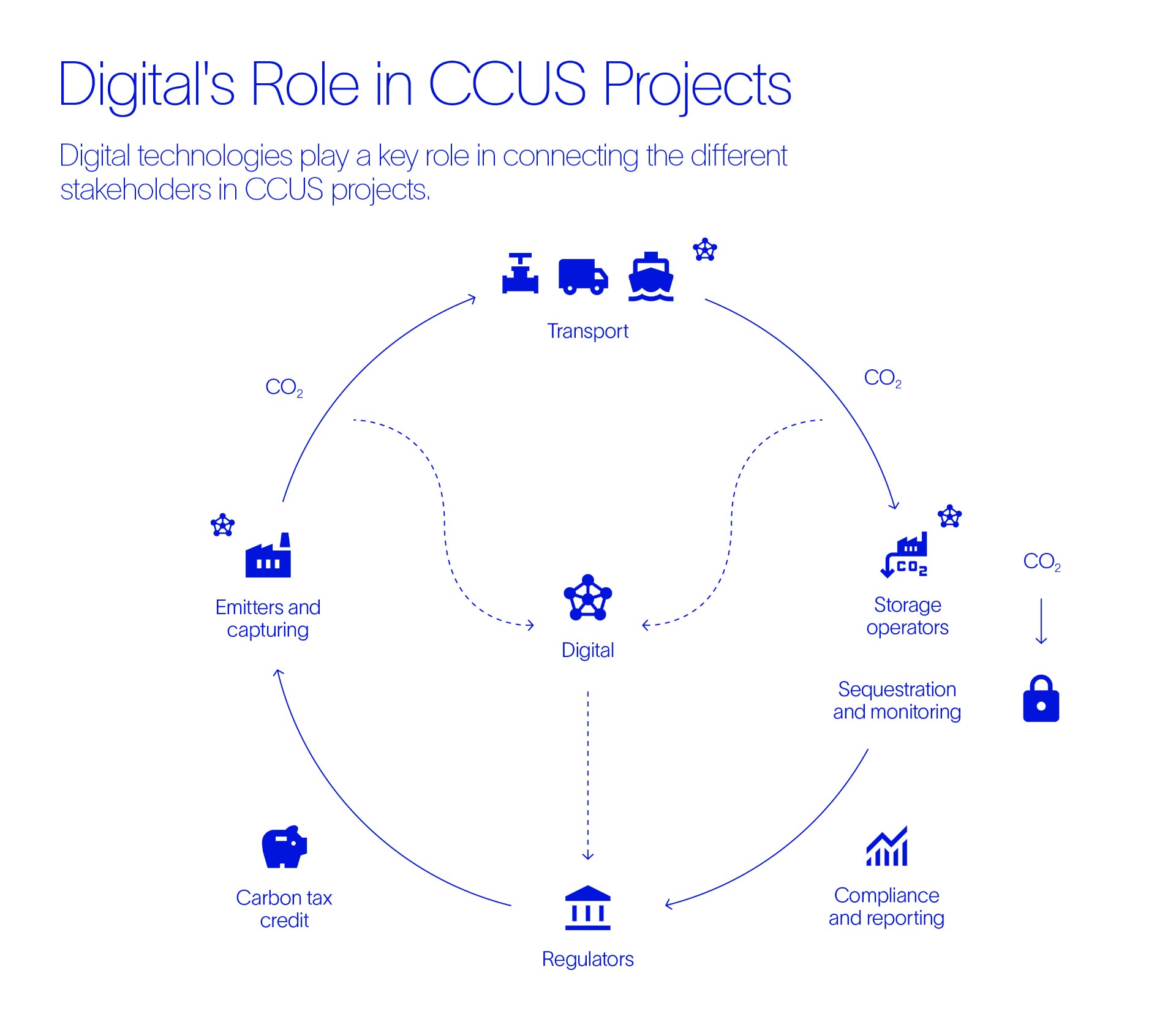
Collaboration is critical to ensure CCUS projects can scale at the required pace to deliver meaningful climate action, and more broadly, the success of the energy transition. Collaboration within organizations—as well as between and with suppliers, service providers, partners, and regulatory bodies—can bring traceability and transparency to the decision-making process.
The role of digital tech goes beyond just connecting data and workflows across CO2 capture, transport, and storage. It extends to a mindset change, by breaking disciplinary and organizational silos through the promotion of data sharing and open collaboration, bringing people together to make the best possible decisions.
Deploying digital at scale impacts the viability of CCUS across the board. As we have seen, the open collaboration that is vital to CCUS is only possible with an interoperable digital platform to connect workflows. And the benefit is greater than improving communications: Costs are significantly reduced, safety is improved, efficiency increases, and better decision making is enabled. The drive toward net-zero carbon emissions by 2050 cannot happen without CCUS, and digital tech is what shifts the economics to make CCUS happen.




